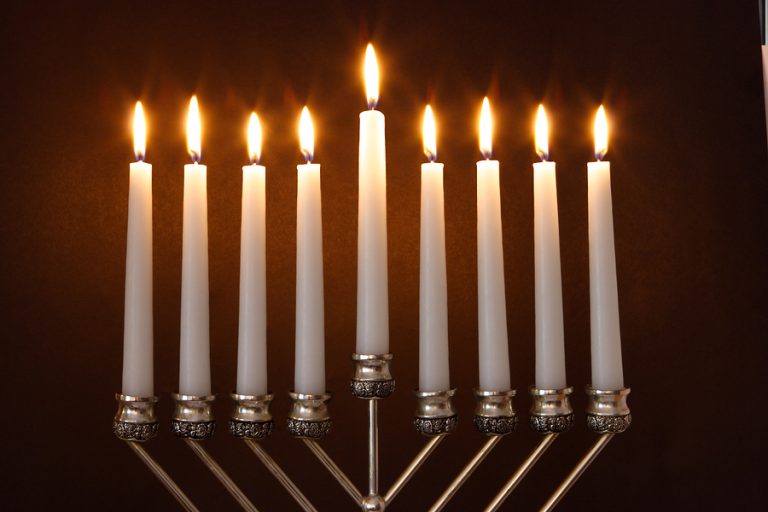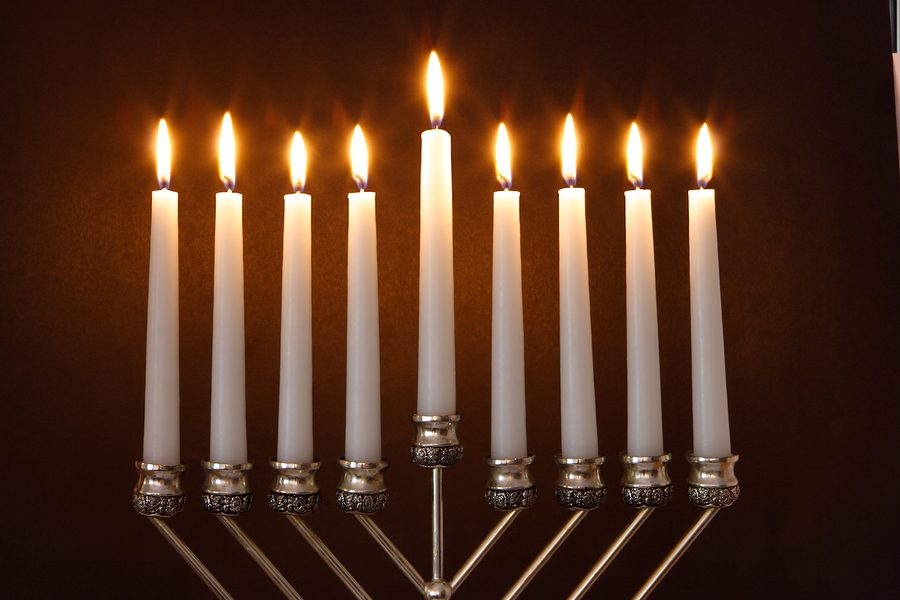Talmudic tractate Shabbat (Masechet Shabbat) introduces the historical background and the basis for the observance of the eight-day Festival of Chanukah. Seven lines(!) are devoted to the presentation of this information, and a mere seven pages(!) are allocated to a discussion of its laws, within a chapter basically devoted to another subject, within a tractate basically concerned with the topic of Shabbat.
 Contrast this with Purim, another holiday that is not mentioned within the Five Books of Moshe. It was added to the Jewish Calendar by our Sages, under the guidance of the “Ruach HaKodesh,” the “Divine Spirit.” Purim, associated with a period slightly earlier in history, was granted a place in the Biblical canon, with “Megillat Esther,” and an entire tractate in the Talmud called, appropriately enough, “Megillah,” devoted to an explanation of its background and laws.
Contrast this with Purim, another holiday that is not mentioned within the Five Books of Moshe. It was added to the Jewish Calendar by our Sages, under the guidance of the “Ruach HaKodesh,” the “Divine Spirit.” Purim, associated with a period slightly earlier in history, was granted a place in the Biblical canon, with “Megillat Esther,” and an entire tractate in the Talmud called, appropriately enough, “Megillah,” devoted to an explanation of its background and laws.
This paucity of information about Chanukah contained within the Written Tradition [although there is a semi-Biblical work called “Megillat Chashmonaim,”] and the Oral Tradition (basically, the Talmud), is one of the central mysteries of Chanukah.
Another mystery is why the Talmud seems to play down the great military victory which the vastly outnumbered Jewish People, under the leadership of the Priestly Family, the Hasmoneans (“Chashmonaim” in Hebrew), won over the forces of the Syrian Greeks. The focus instead is placed on what appears, at first glance, to be a relatively minor miracle which occurred during the rededication of the Temple, after its defilement by the Greeks (see below).
A third mystery is what happened to the undeniably great heroes of the story, the Chashmonaim, under the leadership of their patriarch, Matityahu, Kohen Gadol (High Priest), and his five sons: Shimon, Yehuda HaMaccabi (who led the undermanned, but valiant Jewish army), Elazar, Yochanan and Yonatan (We do know the fate of Yochanan, who was unfortunately crushed by a military elephant). These great individuals, who dared to rise up in defiance of the Greek Empire and miraculously led them to victory, continued to lead the Jewish People afterwards for a few generations, and then disappeared from the stage of history. Why?
Hopefully, the following sections will shed light on the first two puzzles, and we will return at the end to try to deal with the third.
The Gemara in Masechet Shabbat begins:
“What is Chanukah? The Rabbis have expounded: Beginning with the 25th of Kislev, eight days of Chanukah are observed, during which no eulogies are delivered, nor is fasting permitted. For when the Greeks entered the Sanctuary, they defiled all the holy oils used for the Menorah in the temple, and when the Hasmonean house prevailed and vanquished them, they searched and found only one remaining jar of oil with the Kohen Gadol’s seal.
Although it contained only enough oil to burn for one day, a miracle occurred, and the oil burned for eight days. A year later they (the Rabbis) designated these days as Yamim Tovim (holidays) on which praise and thanksgiving were to be said.” (Tractate Shabbat 21)
Maimonides, the great 12th century Jewish scholar and codifier, known in Jewish tradition as the Rambam [Rabbi Moshe ben Maimon], clarifies and expands upon the above, as follows:
“During the period of the Second Temple, the Greek kings issued harsh decrees against Israel; they outlawed their religion, forbade them to engage in the study of Torah and their practice of mitzvot, laid hands upon their money and their daughters, entered the Sanctuary and ravaged it, and defiled all that had been ritually pure. They caused Israel great anguish, until the God of our Fathers granted them mercy and delivered them from the hands of their enemies.
The Chashmonai Kohanim Gedolim (Head Priests) prevailed, slew them, and delivered Israel from their hands. They designated a king from among the Kohanim, and the Kingdom of Israel was restored for more than 200 years, till the second Destruction. Israel prevailed against their enemies and vanquished them, on the 25th day of the month of Kislev.
They entered the Sanctuary and found only one jar of ritually pure oil that was sufficient to burn only for one day; but they lit the lights of the Menorah from it for eight days, till they pressed olives and extracted additional pure oil.” (Rambam, Hilchot Chanukah,Chapter 3)
The Sages of that generation therefore decreed, that eight days beginning with the 25th of Kislev should be days of rejoicing; Hallel (a collection of Psalms expressing special praise) be recited, and that lights be lit at the entrance of the house, each of the eight nights, so as to publicize the miracle. And these days are called “Chanukah” that is to say, Chanu Kaf-Hay; that is, the Holiday’s name, “Chanukah,” is spelled chet, nun, vav, kaf, hay. The first three letters spell the Hebrew word “Chanu,” which means “They rested;” for the last two letters, we don’t look at what they spell, but at their numerical equivalent (NE). The NE of Kaf is 20; the NE of Hay is 5; their sum is 25. Hence, the name means that on the 25th of Kislev they rested from their enemies.
In the above expression of the Talmud: “They made it a Yom Tov for praise and thanksgiving,” “praise” refers to the literal recitation of Hallel, and therefore, the complete Hallel (as opposed to the “partial Hallel” recited on other joyous occasions) is recited during Shacharit on all eight days of Chanukah.
The term ‘thanksgiving’ refers to the recitation of “Al Hanisim” [“For the Miracles”], a prayer of gratitude to G-d for our deliverance which is included in each person’s Shemoneh Esreh, a basic prayer said three times a day consisting originally of 18 (now 19) blessings, during all the days of Chanukah, as well as in Birkat Hamazon [Grace after meals].

